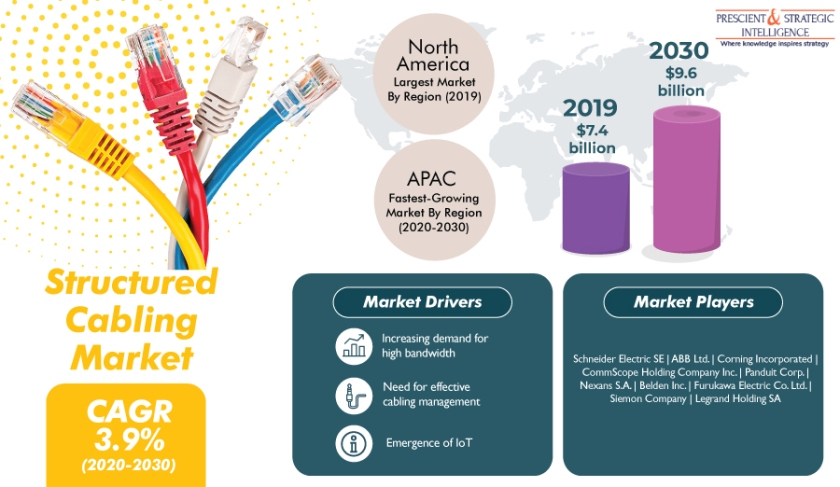The rising penetration of the internet is driving the demand for a high bandwidth, which can be attained through a structured cabling system. Businesses across the world are modifying their information technology (IT) infrastructure due to the rising usage of bandwidth-intensive applications, such as digital audio and video, voice over internet protocol (VoIP), and IP-based videoconferencing.
Owing to this spurring demand, the structured cabling market value is expected to increase from $7.4 billion in 2019 to $9.6 billion in 2030. According to P&S Intelligence, the market will exhibit a CAGR of 3.9% during 2020–2030. Additionally, the installation of structured cabling is increasing in the telecom industry to effectively manage the cabling, without the involvement of a large staff.
Moreover, these systems are incorporated in data centers, business organizations, and government agencies to reduce the operational cost and maintenance time. In essence, these sectors are opting for structured cabling systems to make IT infrastructure management hassle-free, as it is a more-standardized and organized approach than patch cords. A structured cabling system comprises copper cables and copper components or fiber cables and fiber components.
Get the Sample Copy of this Report @ https://www.psmarketresearch.com/market-analysis/india-structured-cabling-market/report-sample
Among the several categories of cables available, end users primarily deploy category 6 cables, as they are available at a lower cost and offer a higher transmission speed than category 5, category 5e and category 3 cables. Moreover, Cat6 wires, which generate an at least 150-Megahertz (MHz) frequency, are compatible with Cat5, Cat5e, and Cat3 cable systems. Additionally, Cat6 cables offer high shielding, cut down signal noise and interference, and reduce the crosstalk.
